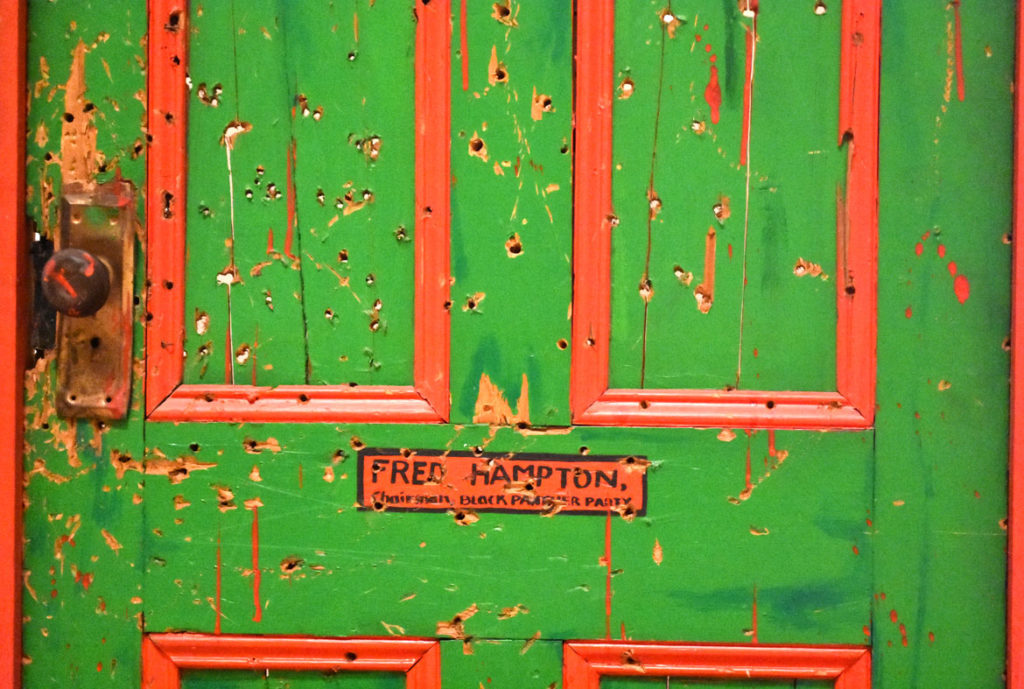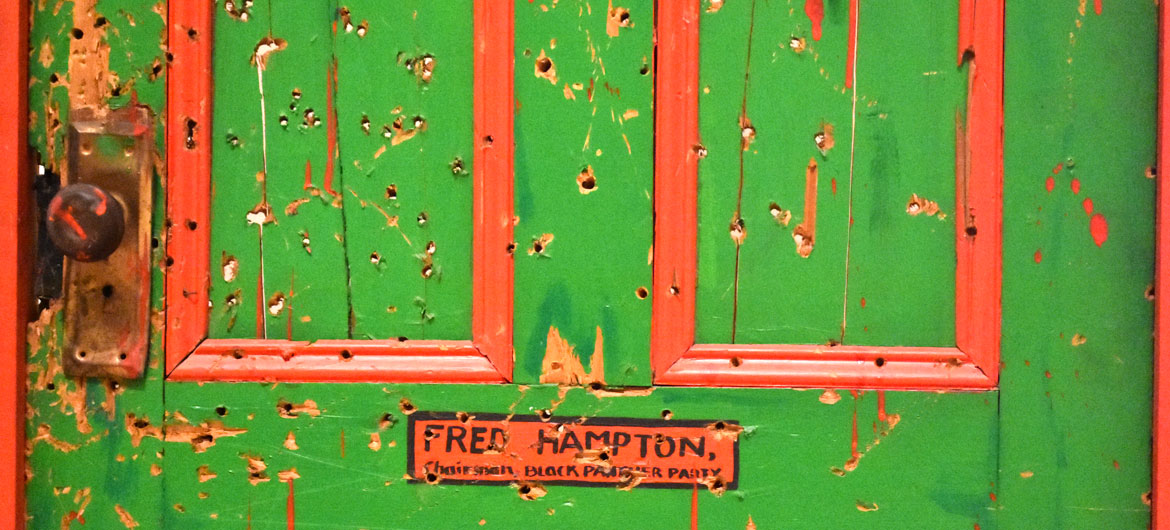The April 6, 1970, issue of Time magazine arrived with a portrait of Jessie Jackson on the cover painted by Jacob Lawrence and the headline “Black America 1970.” Inside was an article about Black American artists—Melvin Edwards, Richard Hunt, David Hammons, Sam Gilliam and, most prominently, “Boston’s Dana Chandler Jr., a product of the tough Roxbury ghetto.”
The magazine said, “At 28 he is a painter whom few in Boston can ignore, since his huge, bright Black Power murals glare from the sides of buildings that people pass by every day. Chandler’s avowed intent is to ‘create a black museum in the inner city. His scorn for the white art world is complete. … His easel works are as bold and simple as his walls. In ‘The Golden Prison,’ he shows a black man behind bars beneath a flag with yellow and red stripes. ‘Why yellow? That’s because America has been yellow and cowardly in dealing with the black man.’”
Chandler was the only artist to get a full-page photo. It showed him standing, serious, next to an easel holding “his painting memorializing the shooting of Black Panther Fred Hampton by Chicago police.” Hampton, the charismatic 21-year-old Illinois chairman of the Black Panther Party was murdered by Chicago Police on Dec. 4, 1969, during an early morning raid of a West Side apartment that was home to Panthers. Chandler’s small canvas depicted the center of a red door bearing a label “Fred Hamton [sic]: Black Panther Party” and the middle riddled with bullets. The magazine noted, “The bullet holes are real holes.”
“I think [Black Panther] Mark Clark had come to the door and before he could open the door they fired shotguns and killed him,” Chandler, who left Boston for New Mexico in 2004, told me last year. “I wanted to make a statement about that.”
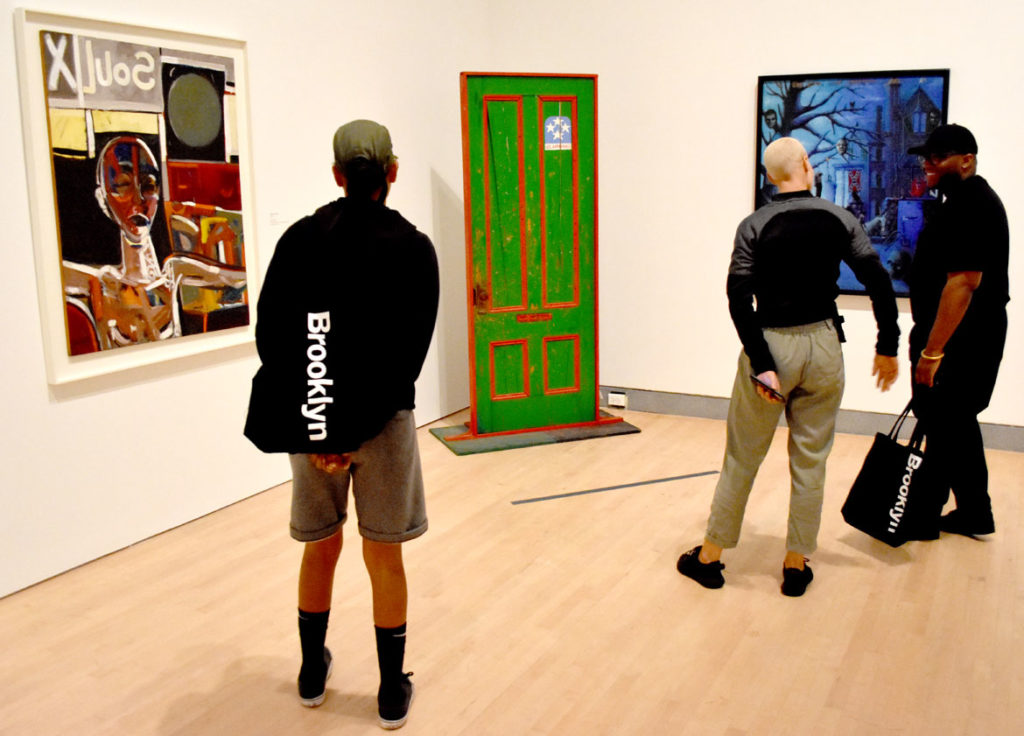
Chandler’s second version of that painting “Fred Hampton’s Door 2” from 1975 stands at the heart of “Soul of a Nation: Art in the Age of Black Power,” a landmark survey exhibition organized by the Tate Modern and on view at New York’s Brooklyn Museum through Feb. 3.
Chandler “sort of fully took it upon himself, in what he saw as a deliberately unsubtle way, to make images of protest that directly related to the events of the Black Power struggle,” says Mark Godfrey, one of Tate curators who organized “Soul of a Nation.” “His work was the most overt, the most directly political.”
In Chandler’s second version of “Fred Hampton’s Door,” he used an actual wooden door that he stood up on a black base and painted vivid red and green—the colors of the Pan-African flag. The door—particularly the knob and lock—appear shattered by bullets. And it’s all splattered with red paint, like blood. It exudes a visceral sense of violence.
“It’s a very compelling piece. It’s a very poignant meditation on the killing of a young activist,” Godfrey says. “The door is shot through so in some way the door stands for the body. … It’s not a subtle work of art.”
Update: On April 7, 2021, Boston’s Museum of Fine Arts announced “the acquisition of a major work by Dana Chandler, Jr. (born 1941). ‘Fred Hampton’s Door 2’ (1974) serves as a statement against police who killed 21-year-old Black Panther Party leader Fred Hampton on December 4, 1969, in Chicago. The piece, pierced with bullet holes and painted in vivid green and red—colors referencing the Pan-African flag—memorializes Hampton and associates his murder with the broader suppression of Black liberation movements globally.”
If this is the kind of coverage of arts, cultures and activisms you appreciate, please support Wonderland by contributing to Wonderland on Patreon. And sign up for our free, weekly newsletter so that you don’t miss any of our reporting.
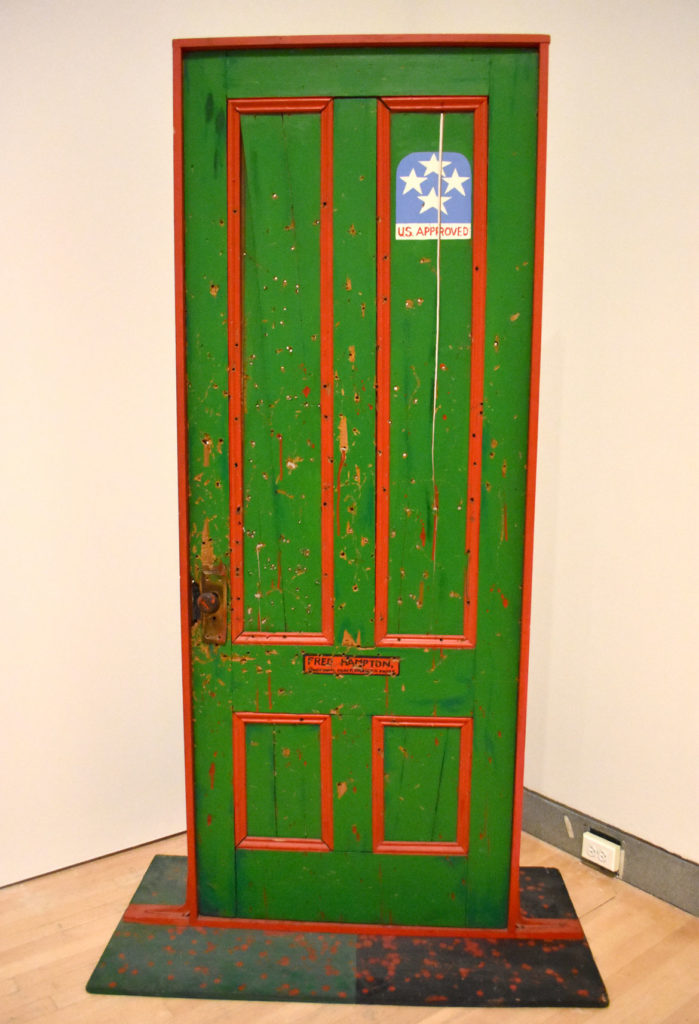
Black Revolutionary Change
Dana Chandler Jr. was at the African American artistic vanguard as the Civil Rights movement shifted to Black Power.
“Black Power was coming out of an urgency, out of the assassination of Malcolm X in 1965,” says Ashley James, assistant curator of contemporary art at the Brooklyn Museum, who oversaw the presentation of “Soul of a Nation” there. It was coming out of the shooting of James Meredith, the first black man to enroll in the University of Mississippi in 1962, during the second day of his “March Against Fear” from Memphis to Jackson in June 1966. It was coming out of frustration over the Voting Rights Act being passed in 1965, but Black folks still prevented from voting. “There was a sense of a real disenchantment with nonviolence and legal means of achieving equality.”
The Black Power movement sparked a new political sensibility and a growth of activism among Black artists. Black artists also grew increasingly and vocally concerned about access to the art world and curatorial authority, notes Edmund Barry Gaither, longtime director of the Museum of the National Center of Afro-American Artists in Boston’s Roxbury neighborhood, who contributed an essay to the “Soul of a Nation” catalog.
“Dana comes into his own in a moment when artists are being called upon, if you’re plugged into the vibe, to take a role in the social struggle,” Gaither says. “Dana participates in this new and stronger direction in which visual artists are being called to engage in art that is involved in Black revolutionary change.”
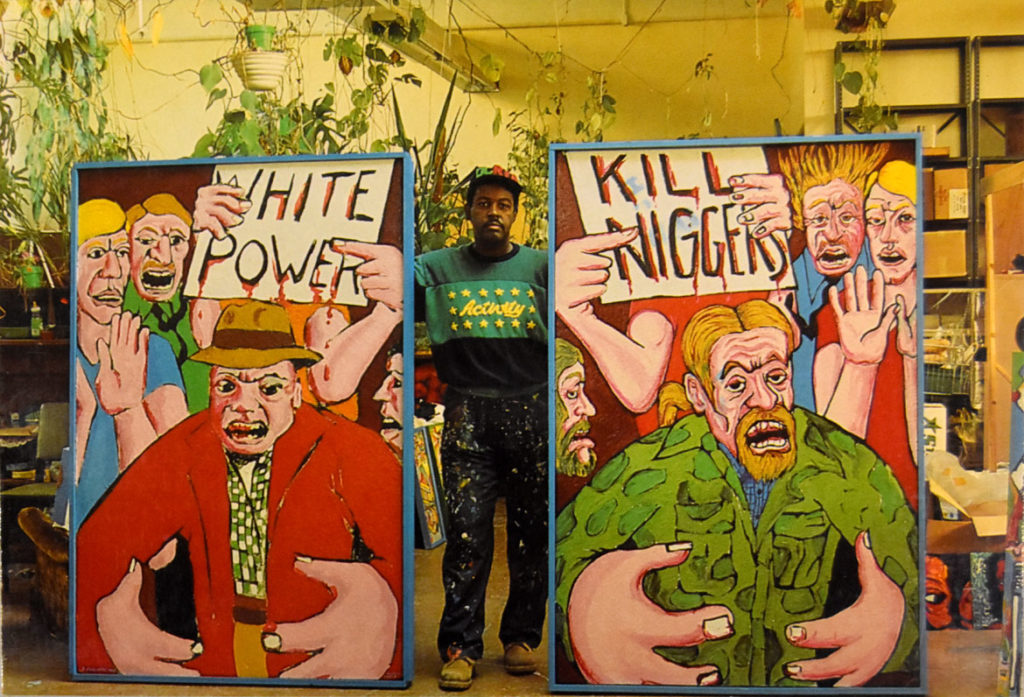
Chandler was born April 7, 1941, and spent his early years in Lynn, Massachusetts, before moving to Boston’s Roxbury neighborhood when he was 5 years old. In his early 20s, he was president of Boston Youth Council of the National Association for the Advancement of Colored People (NAACP), and worked against segregation of Boston public schools. Before heading off to the 1963 March on Washington, he told The Boston Globe: “I feel this (equal rights) is something my ancestors bungled and what we must correct now. I want to do something so when my children grow up it will all be a bad dream.”
Particularly galvanizing for Chandler was a June 1967 sit-in staged by Mothers for Adequate Welfare at Boston’s Grove Hall Welfare Department Office on Blue Hill Avenue. “They charged that their checks were cut off without notification or investigation, that social workers were hostile to them and that police ‘pushed them around’ at the welfare offices,” The Boston Globe reported.
Protests and uprisings across the United States “were born out of anger and frustration with the sum of conditions—economic, political, social, across the board—that had been growing in intensity since the Second World War,” Gaither says. “The entire landscape was shifting. It’s a shift in which Black people, especially young Black people feel emboldened and feel in fact that they have the obligation to press forward.”
The Grove Hall protest began on a Thursday, with the women demanding to talk with city Welfare Director Daniel J. Cronin. He didn’t appear until Friday evening, when about 50 women, several with small children, still occupied the office and a crowd of a few hundred people had gathered on the street. Boston Police tried to force the women out. “A woman inside screamed,” the Globe reported. “The window in a door shattered. The crowed surged forward. Physical contact was made. A sidewalk brick whipped across the street.”
The following day, the Globe headline read: “Sit-In Escalates into Riot: 500 in Roxbury Melee; 45 Hurt, 30 Held, Shots Fired.”
Chandler says, “They had that huge police riot at Grove Hall at the welfare office they had at the time. The welfare mothers had the audacity to picket the welfare office. … The police rioted all over the people in the community.”
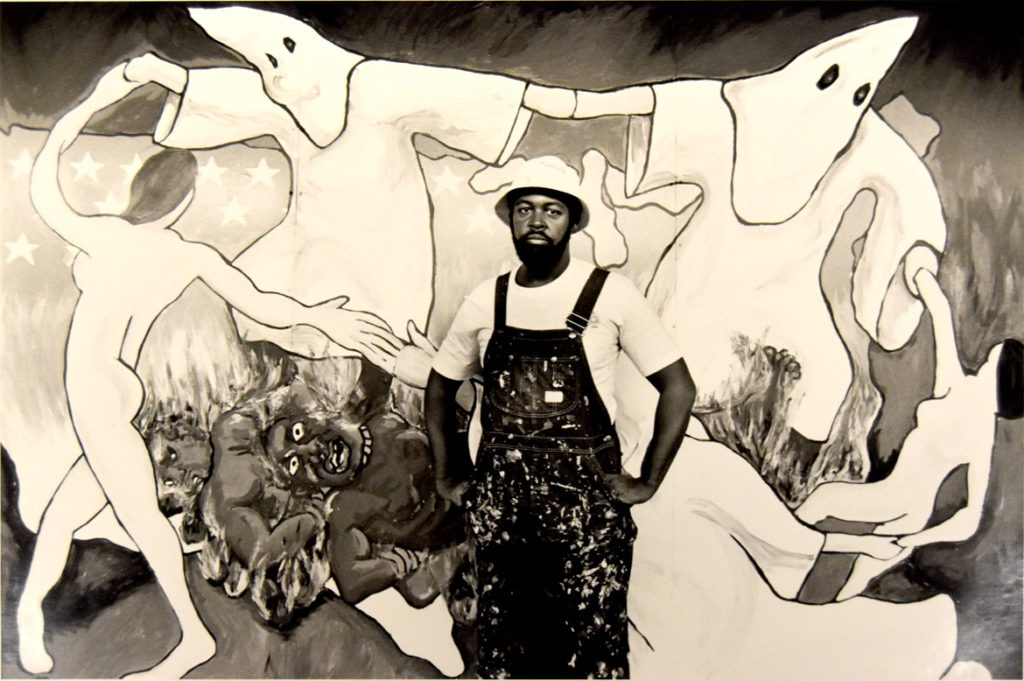
Roxbury Rebellion
Chandler graduated from Massachusetts College of Art in Boston the same month as the Grove Hall sit-in.
“I did a couple, two or three paintings in response to that,” Chandler says. He portrayed White police beating fleeing Black women in paintings with titles like “Grove Hall Love-In” and “Roxbury Rebellion.” “That really was the codifying event that happened that caused me to become what White folks termed a ‘revolutionary artist.’ … Most of these names were attached to Black movements by White folks.”
“I’ve got an awful lot to say about what is happening to my people in this country and I’m going to say it,” Chandler told the Globe in January 1968, when he had an exhibition at a Lexington public library. “I’m trying to get across to the black community that art can say something, dammit, and to them. I want my art to be for them and for the few whites, artists maybe, who can understand it and love it.”
“Grove Hall Love-In” was one seven Chandler’s paintings vandalized in the Lexington exhibition in February 1968. Someone splashed white paint across the artworks. “The police had me take a lie detector test to make sure I didn’t do it,” Chandler says.
“I was upset,” Chandler told the Globe in 1968, “but I wasn’t surprised. I expected that my paintings would arouse some kind of reaction in the white community.”
The following month, his 8-foot oil portrait of Stokely Carmichael was found “ripped to pieces by vandals” at Boston Technical High School, the Globe reported.
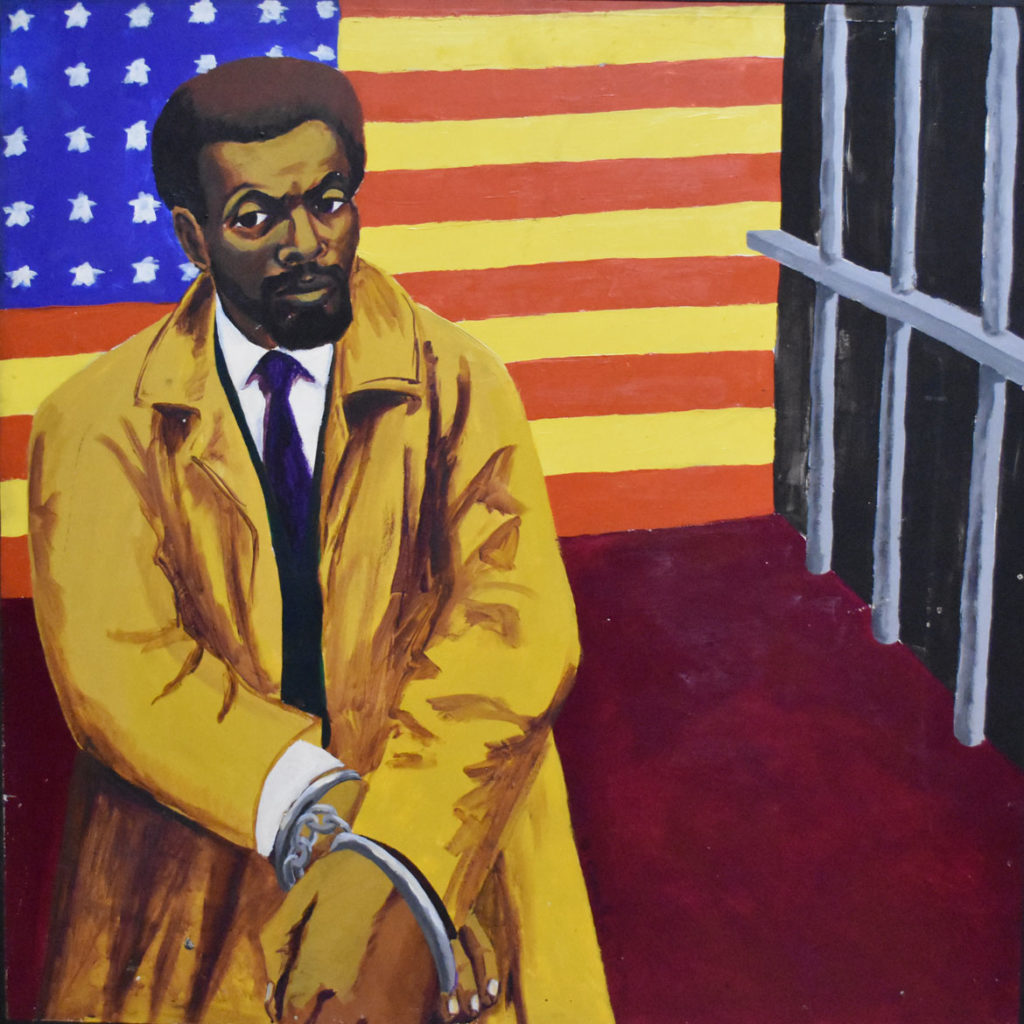
Meanwhile, during the summer of 1967, African American artists pained a 60-foot-wide mural on the side of a run-down tavern on Chicago’s South Side. It was a work of affirmation, highlighting African American heroes. They called it the “Wall of Respect” and the mural would inspire hundreds of Black Power murals all across the United States. Among the artists it inspired was Chandler. “We wanted to do some ‘Walls of Respect’ in the black community like the one that was done in Chicago,” Chandler said in 1974 to the authors of the 1977 book “Towards a People’s Art: The Contemporary Mural Movement.”
Chandler, Gary Rickson and Sharon Dunn were among the artists who began painting Black Power murals in Boston. “There is no black art in the Museum of Fine Arts,’ Chandler told the Globe in July 1968, “so we are going to utilize the façade of buildings in our community for our museum.” Chandler continued, “Black art is not a decoration. It’s a revolutionary force.”
Chandler painted a mural depicting Malcolm X. He painted a mural urging people that “Knowledge Is Power/ Stay in School.” He painted a “Freedom and Self Defense” mural, which showed “Stokely Carmichael shining rays of knowledge into the body of a slave who’s trying to rise up and free himself,” Chandler recalls. “Rap Brown had a Molotov cocktail in this hand. That’s probably why the piece got bottles of white paint thrown on it.”

Chandler repeatedly challenged the de facto White-artists-only segregation of Boston area museums—calling on Brandeis University’s Rose Art Museum, Boston’s Institute of Contemporary Art, the Museum of Fine Arts to feature Black artists. “The Museum of Fine Arts was right across the street from the Black community and didn’t show Black art until the 1970s,” Chandler says.
In January 1970, Chandler arrived at Boston’s Museum of Fine Arts with a letter addressed to museum director Perry T. Rathbone and the board of directors: “A Proposal to Eradicate Institutional Racism at the Boston Museum of Fine Arts.”
Elma Lewis, founder of Boston’s National Center of Afro-American Artists, had been carrying on negotiations with MFA leaders for as many as five years to help launch an African American museum here. She’d got the museum to help support the hiring in 1969 of Edmund Barry Gaither as an African American curator and consultant to the Museum of Fine Arts in collaboration with the National Center.
These twin pressures from Lewis and Chandler led the Museum of Fine Arts to put together the exhibit “Afro-American Artists: New York and Boston” at the Museum of the National Center of Afro-American Artists, the Museum of Fine Arts, and the School of the Museum of Fine Arts, in spring 1970. Along with New York artists Benny Andrews, Romare Bearden, Jacob Lawrence, Norman Lewis and Alvin Loving, it featured Boston artists Chandler, Rickson, Ellen Banks, Calvin Burnett, Jerry Pinkey, John Wilson and Richard Yard.
Chandler’s career was on the ascent, but then his studio in Boston’s South End was ransacked in 1973. “First they broke in, stole everything they could possibly steal. Then they turned the water on to flood the basement. Then they burned the building down,” Chandler says.
Northeastern University in Boston came to his aid by bringing him in to be an artist-in-residence at the school’s new African American Studies program in return for teaching a course at the school.
Chandler soon convinced Northeastern to give him larger space, in an old factory at 11 Leon St. in Roxbury that the school owned. He moved in during 1974 and turned it into a mammoth studio (around 32,000 square feet) and event space, hosting parties for the MFA and a conference of African American artists. The space was so large that in November 1978, Chandler and Northeastern opened the space up to other black artists as part of the launch of the African American Master Artists In Residence Program. Ten large studios were offered “to provide a living focus for the international third world and world community around the diverse dynamics of African-American aesthetics,” organizers said at the time.
The initial roster of artists (not all of them occupied studios at Northeastern, as some preferred to keep the studios they already had) included Ellen Banks, Calvin Burnett, Dana Chandler, Milton (Johnson) Derr, Tyrone Geter, Arnold Hurley, Reggie Jackson, Stanley Pickney, James Reed, Rudolph Robinson, Barbara Ward, John Wilson, and Theresa Young.
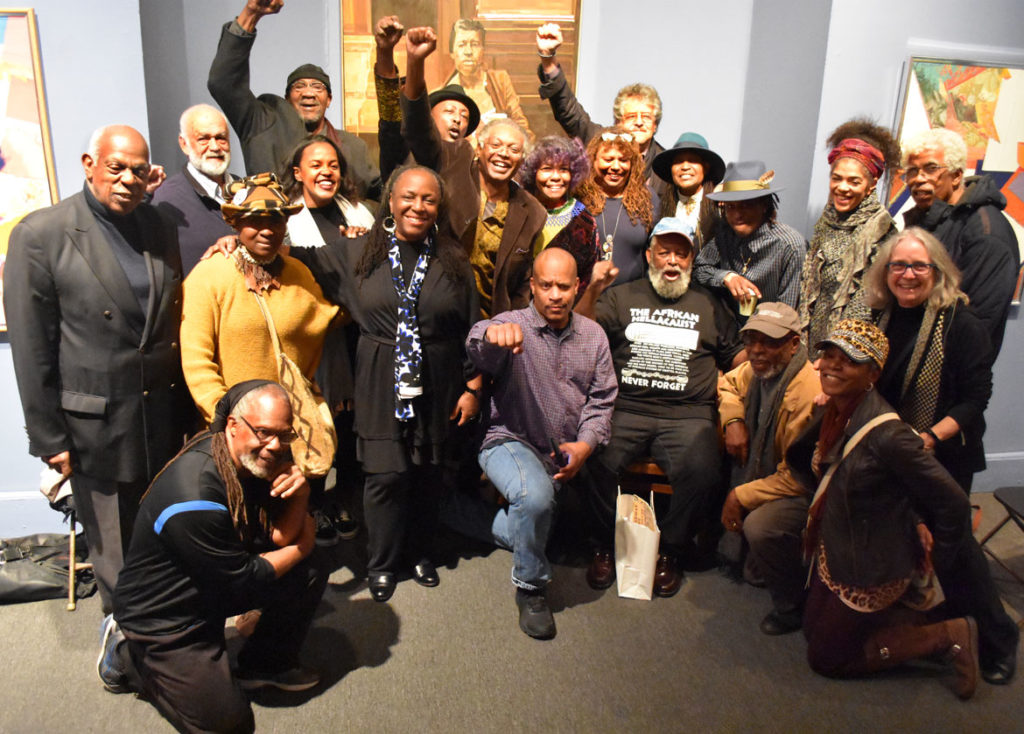
It was a landmark project in its recognition of black artists, in the amount of space offered, in the length of the residencies (three years to start, but many allowed to stay much longer; some current resident artists have been there decades), and it was “rent-free” (which continues to this day, artists say). “Thus enabling the artists to produce works at a level of intensity none has ever been able to attain,” organizers wrote in the late 1970s. (Since late June, Northeastern leaders have been telling the program to vacate its current studios at 76 Atherton St. “because of hazardous conditions.”)
“Dana was certainly a catalytic personality in the Black art scene,” Gaither says. “He stood at the head of an activist element of the artist community, especially from the late ‘60s into the ‘80s. … He was never one to mince his words or retreat from confrontation. In fact, I think he liked that much more than others in the art community. So he was always making a way, making a space that others could consolidate. I think he also thought a lot about artists as a community (that isn’t to suggest he hasn’t always had a great affection for himself, he has a good ego) that is expressed more than anything else in how he forged AAMARP. He could have shaped that only as a personal opportunity. … But he chose to make that a bigger thing.”
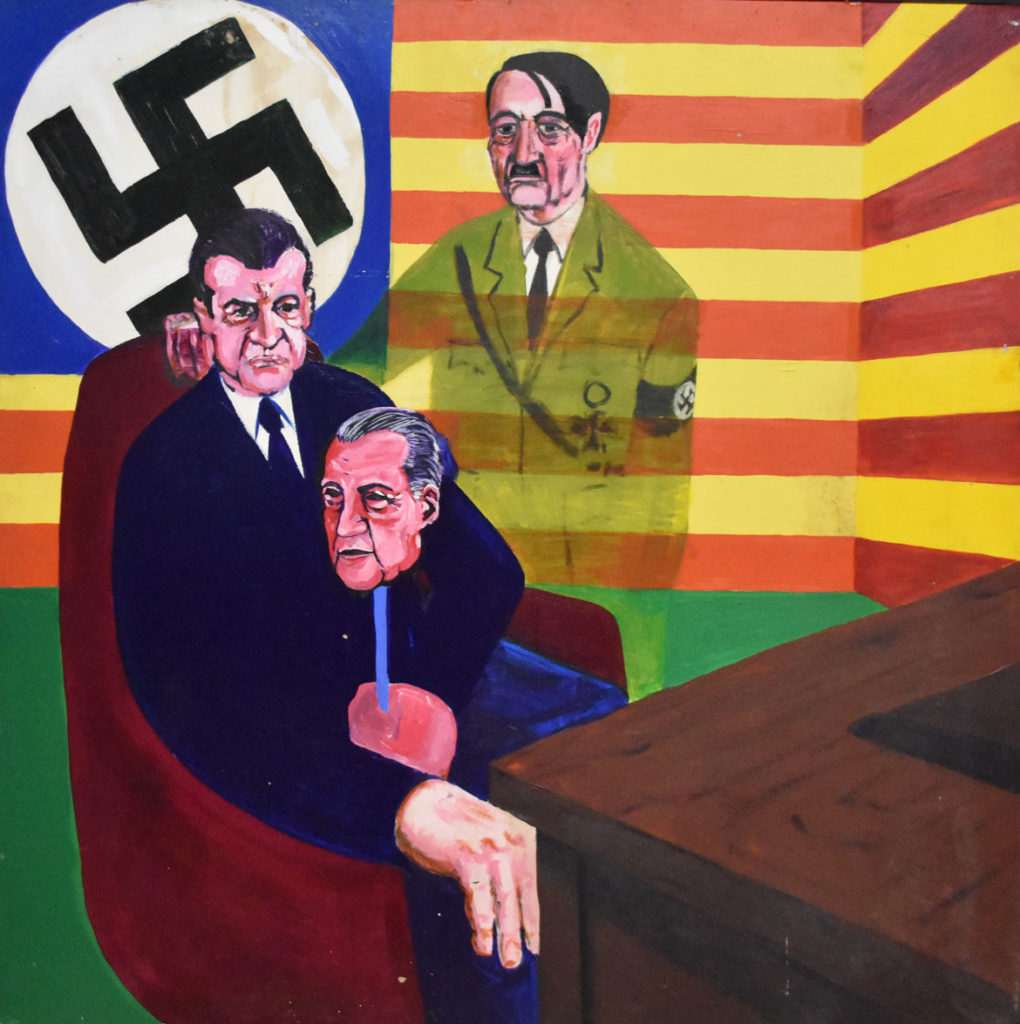
Fred Hampton’s Door
Chandler exhibited his first version of “Fred Hampton’s Door” in a one-person show at Galerie Amadeus on Boston’s Newbury Street in October 1970. The exhibition also included paintings about junkies overdosing on drugs and the Vietnam War’s affect on people of color. In the gallery’s window was Chandler’s painting of President Richard Nixon holding a puppet resembling Vice President Spiro Agnew. Adolph Hitler stood behind them. The background was an American flag with the stars replaced with a swastika. “I’m peaceful people, but this way is the way it’s got to be because you other people are foolish,” Chandler told the Bay State Banner then.
“He would see something in the news one day and go into his studio the next and making a painting of it,” Tate curator Mark Godfrey says. “…He was living in the present and his works were being made as interventions in the present.”
The “blistering oil of Panther leader ‘Fred Hampton’s Door,’ riddled with bullet holes” (in the Globe’s words) was exhibited again at National Center of Afro American Artists in spring 1971. But Chandler says it “was stolen from the 1974 Spokane, Washington, World’s Fair,” called Expo ’74.
“At the end of the show, when the work was supposed to be sent back, my work wasn’t sent back,” Chandler says. “I contacted them. They acted mystified. I don’t know if it was stolen in transit or stolen off the wall. … I’ve had more people steal my work than buy my work.”
Chandler decided to paint a new version of Fred Hampton’s door using an actual door that he found abandoned in an empty lot. The curators of “Soul of the Nation” say he “subjected [the door] to splintering and damage from bullets.” Chandler is coy about whether he actually shot the door: “I’ll never tell. …. Just say the holes magically appeared.”
“Rather than showing his [Hampton’s] dead body, what I did is show a portion of a door with bullet holes in it,” Chandler says of his original version of the painting. “I’m aware as an artist who is a student of art history, sometimes you create symbols of things as opposed to imagery that speaks realistically to things. And these officers had the audacity to blow the door open. An image of his body would be one of hundreds, of thousands of images of dead Black bodies.”
“People find it very disturbing to stand in front of that door,” Chandler says of his second version. “It makes Fred Hampton’s death real. I would say it’s one of the more important iconographic paintings in African American history.”
If this is the kind of coverage of arts, cultures and activisms you appreciate, please support Wonderland by contributing to Wonderland on Patreon. And sign up for our free, weekly newsletter so that you don’t miss any of our reporting.
